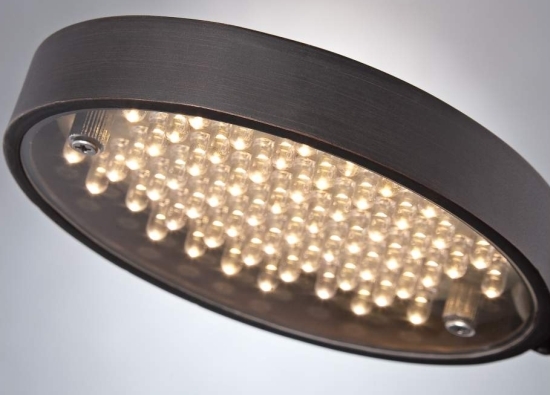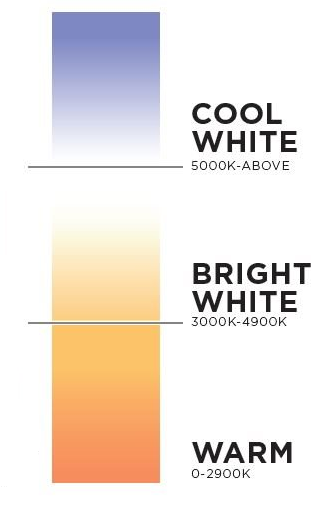LED and Color Temperature Explained

LED lighting is all the rage these days. It’s energy efficient, long-lasting and available in a wide variety of innovative shapes. But the thing that matters most to people when shopping for LED lights and bulbs is the actual color quality of the light. We call this “color temperature.”
In simplest terms, color temperature is a light’s appearance of “warmth” or “coolness.”

LED Lighting and Color Temperature
In technical terms, color temperature is the temperature of an “ideal black-body radiator that radiates light of comparable hue to that light source.”
Let’s try that in English: imagine a black object. At room temperature, the object would obviously appear black. Heated up to 1500 degrees Kelvin (K) however, it would glow red. At 2700K, it takes on a warm, yellowish glow.
At 4200K it appears bright white, and by 5500K it glows blueish. That’s how the color temperature numbers are determined.
Enough of the geek-speak, just remember that the number indicates the general look or feel of a light or the light bulb colours when it’s turned on.
Here’s a color temperature cheat sheet to use when shopping for LED lighting:

Warm White (up to 2900K) – This temperature range is similar to the standard incandescent bulb in terms of color tone and warmth. Most people find this range comforting, and LEDs with this color temperature are perfect for family rooms, dining areas and bedrooms.
Cool White (3000K to 4900K) – Bright and crisp tone that is ideal for use in work areas, home offices, garages, and basements.
Daylight (5000K and up) – Crisp, intense light that has a slightly bluish white tone. This type of light is frequently used for outdoor lighting, commercial or retail spaces, security lighting and so on.
You can use the above ranges and color descriptions as a general guide when shopping for new LED lighting. Keep in mind that many LEDs are also able to toggle between color temperatures depending on what task you need them for–a perfect trait for both desk lamps and ambient room lighting.
Check out our video “What Kind of LED Light Bulbs Should I Use?” below:
More Light Bulb Ideas and Advice
Lumens: the Key to Buying Replacement Light Bulbs
Light Bulb Identifier and Finder Guide
How a Halogen Light Bulb Works
